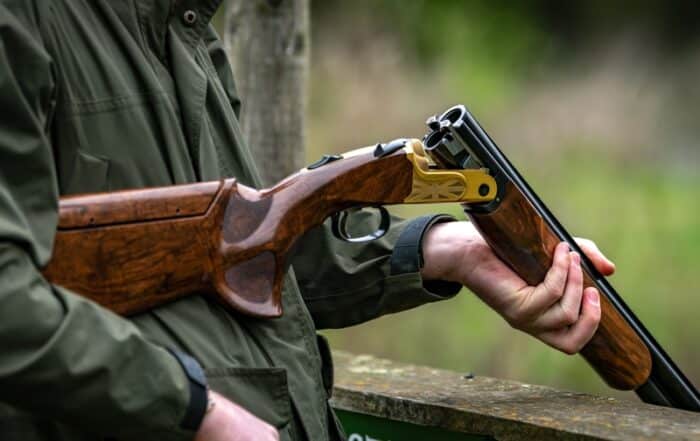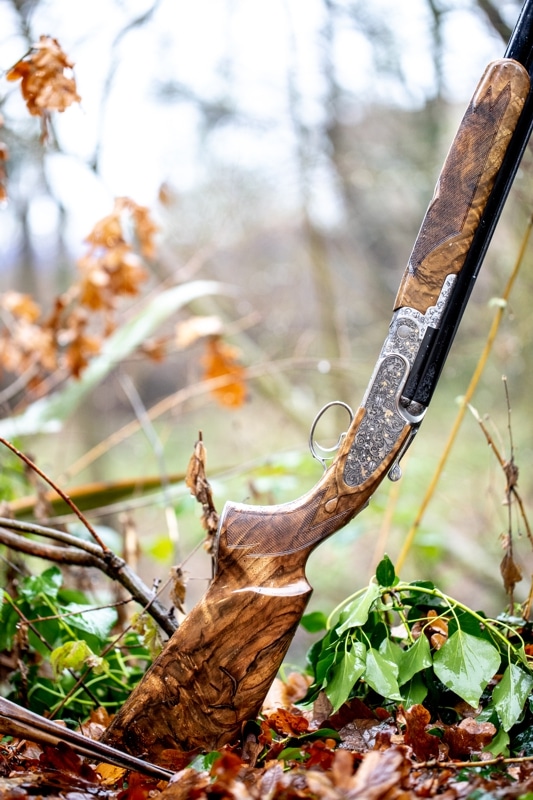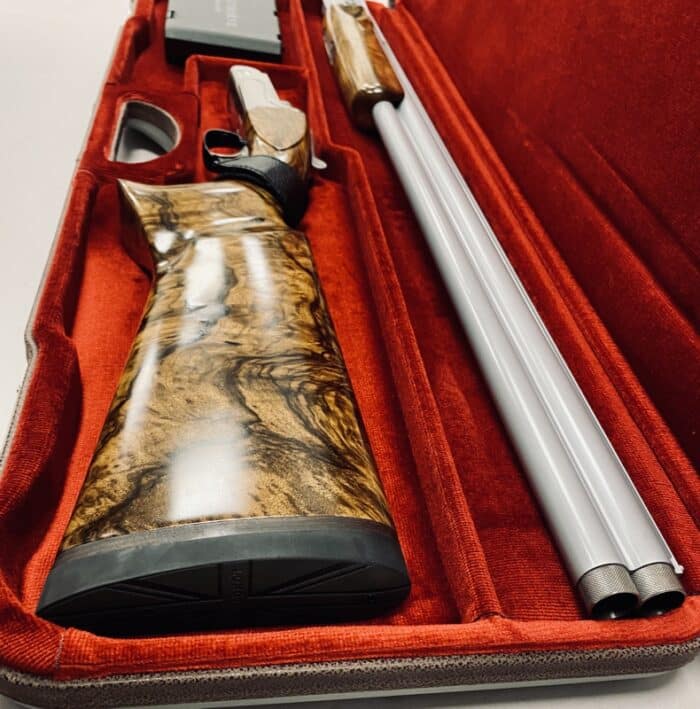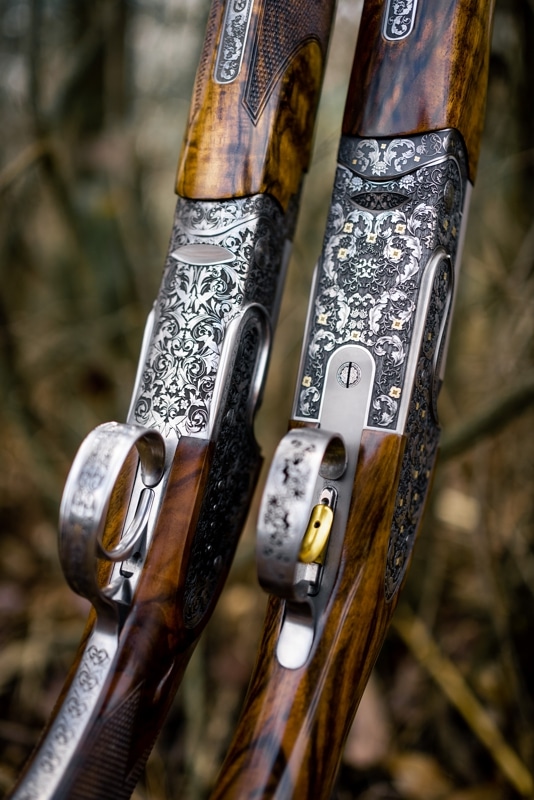Interview with James Stewart Innovator Behind Longthorne Gunmakers
At the recent Dallas Safari Club convention, I talked with James Longthorne Stewart, founder of Longthorne Gunmakers. He discusses his background, starting as a child interested in engineering and working with firearms on a farm. He discusses the technical aspects of gunsmithing and his approach to design and manufacturing, particularly focusing on modernizing the process and incorporating new technologies. He also shares his thoughts on the aesthetics and functionality of guns, his journey in creating a successful gun design, and his views on the future of gun manufacturing.
Beginnings
Jeremy:
James, could you share your background, particularly how you became a gunsmith? What’s the history behind it? How far back does your interest go?
James:
I’ll start from my childhood. Even before secondary school, I was drawn to engineering. Growing up on a farm, I had unique opportunities to experiment with things most kids couldn’t, like setting fire to things and blowing things up. My first exposure to guns was on the farm, where I encountered shotguns, air rifles, and various firearms. The first gun I worked on was during high school when a fellow student was crafting a double-trigger assembly for a side-by-side shotgun as a project. That was my initial glimpse into the internal workings of firearms.
After leaving school, my ambition was to become a gunsmith. I recall visiting one of the last gunsmith shops in my area to seek an apprenticeship, only to learn they were closing down. This decline of small gunsmith shops in the UK was disheartening. I noticed a stark contrast in the US, where the trade is more recognized and valued. There’s been a shift in the UK from hands-on trades, with more emphasis on computer-based work and remote working. My journey into gunsmithing began very early and was shaped by these experiences.
Jeremy:
So, was Longthorne the first company you started, or did you go through other iterations?
James:
I couldn’t get a job as a gunsmith initially, so I became a toolmaker. Toolmakers often make better gunsmiths than gunsmiths do as toolmakers. In tool making, I learned many machining techniques that you wouldn’t typically learn in gunsmith school, including big machining, five-axis machining, spark erosion, and wire erosion. These techniques, which are less common in handmade guns, are now integral to our production.
Looking back, my engineering background ideally positioned me to be a modern gunsmith or gun maker. We train our guys to have both modern knowledge and traditional hand skills. It’s essential to learn traditional skills like using a file. For example, one of the tests in college was to create a one-inch cube that fits through a three-inch square hole with a two-four clearance on each side, all done by hand. Although it seemed like tool-making, it was essentially gunsmithing.
When I look back, these skills have been invaluable for gunsmithing. I know how to use a file and other skills that might surprise those who think I only come from an engineering background. For instance, we had a guy who worked for us previously at Purdy, and he was surprised to see me crafting a trigger guard from a flat bar. The most crucial inspections of guns are done with your fingertips, not just your eyes. It’s vital that guns feel right, which is why we start our apprentices with fundamental tasks like sweeping the floor. This might seem trivial, but it’s about instilling pride and precision from the beginning.
Our training approach is strict; we start with my way, and if there’s a better way, it needs to be proven before being adopted. This comes from learning from my own mistakes and trying to pass on that knowledge. If we could learn from our forefathers’ mistakes, we’d be much more advanced.
Jeremy:
Did you apprentice as a gunsmith first?
James:
Initially, I didn’t get a job as a gunsmith, so I became a toolmaker and served five years in that role. After that, I ventured into furniture making, a hobby of mine. We moved around a bit, even relocating to Australia, where I started an engineering business. I did a lot of gun-related work there as part of our services. When we returned to the UK in 1998, we continued the engineering business, focusing on high-precision components. However, the 2008 recession recession gave us the push we needed to concentrate on shotguns, so I decided to start our own product instead of relying on other businesses.
The idea for Longthorne had been developing since 2006 when I began experimenting with making barrels for a friend. We faced challenges in getting the barrels perfectly straight, which led us to seek advice from a barrel maker who had previously worked for one of the bigger English gunmakers. His techniques and equipment inspired our approach at Longthorne. He said, “This is what you do,” and the two pegs fit down the end of the tubes. When it’s all hot and the solder’s soft, he puts it in the end of the barrel and just wiggles it a little. He looks at the barrel and says, “Yep, that’s good.” But I disagreed; I thought it wasn’t good enough.
So, when we went back to the factory, I told George this process wasn’t proper. I realized the solution was to create the barrels as one piece. That’s where it all started. We decided to machine it from one block. The first piece we made was a three-inch square, thirty inches long, to check the geometry of the holes. We persisted despite initial challenges, like holes drilling out sideways or the barrels turning out like bananas. Eventually, we succeeded and launched our product in 2010 at a game fair, having just received proof the day before. It was quite a journey.
Innovation and Artistry Combined
Jeremy:
Wow, 2010 was the official launch year. You looked at a renowned English gun manufacturer and thought you could do better.
James:
I wouldn’t phrase it like that. We were just running our own race from the beginning. Unlike the British market, the American market is very accepting of new technology. After living in Australia for ten years, I found a lot of resistance from UK gun makers when we introduced our methods. They’ve been doing it a certain way for 200 years, so our approach wasn’t well received. One main question we get is about regulating the barrels. Our method doesn’t require traditional regulation; it’s all done through precise machining.
Our initial shotgun barrels were parallel because they didn’t need to converge. This defied the traditional belief that barrels need to be convergent to shoot straight. We proved our method with lasers, showing that our parallel barrels were accurate. Our barrels are set so the patterns overlap at 35 to 40 yards, but this doesn’t significantly affect the shotgun’s pattern.
Jeremy:
So, from what I’ve seen of Longthorne here and my understanding of you—correct me if I’m wrong—my perception is that you’re bringing modern processes to the English gun market. You’re doing unique things, like using titanium barrels and having a distinct pistol grip on your stock.
James:
Yes, we do have a straight-hand stock on display here, showing that we make conventional stocks as well. My approach is informed by my understanding of physics, which I was reasonably good at in school. I focus on controlling the felt recoil, not just the actual recoil, ensuring that it is linear rather than causing muzzle jump. This is partly due to the rigidity and straightness of the barrels. For instance, a bent tube will cause a bullet to veer off and the gun to recoil in the opposite direction. We’ve measured barrels from other manufacturers and found significant inaccuracies, like corkscrew patterns. Our method involves precise technology to ensure straightness.
Regarding the pistol grip, it’s designed to keep the wrist straight, aligning the recoil with the arm’s natural position. This ergonomic approach differs significantly from traditional English grips, and it’s best understood by holding a gun. We aim for the recoil to be in line with the wrist, just like when pointing at a target.
And then we try to make it aesthetically pleasing to people as well. So, you can look at it and think, “Well, that’s a pretty thing.” I think we’ve done a reasonable job of making something that will do both.
It’s a bit like making cars, isn’t it? Cars have to function. You have to get in, turn the key, drive off, get to where you’re going, and switch it off again. Cars don’t need to look like they do. They could really just be nice and square with a bit of a wing on the front to blow the air over the top. It would all be fine because the aerodynamics of most cars don’t matter at all, as you never drive them far enough to worry about it. But they look nice for a reason, and they feel nice.
That’s what we try to do with our gun design. We’re making something that people care about and understand when they pick it up and feel it. You can pick it up with your eyes closed, and it feels nice. We’re trying to get that into something that’s got to be mechanically sound, operating under extreme duress. And the lighter you make it, the more expensive it gets. It’s exactly the same as Formula One. I used to do a lot of work for Formula One. We made crankshafts for Cosworths and conrods for Renault, and Titanium conrods for Renault. All kinds of stuff that we’ve made in the past.
Jeremy:
So, you’re making a full titanium gun, right? Were you the first person to make titanium barrels in a shotgun?
James:
No. Currently, we have a titanium receiver in the factory that we haven’t put on a gun yet. We’re not the first to make titanium barrels. Flodman did it, I think, before 2000. They made a set of titanium tubes with side ribs and glued it all together. The problem with glue is that it tends to fail over time, but the concept was there. There was some discussion about it on Facebook, and people mentioned that Fabbri makes titanium barrels, but they actually make steel barrels with a titanium receiver. Then someone mentioned Flodman’s titanium barrels. I googled it and found information about Flodman’s titanium barrels. I learned from a customer in New Zealand who owned that specific gun that it fell apart and couldn’t be kept together. So, we’re the first to make the barrels out of one piece and machine it from solid.
Jeremy:
So, the first commercially viable shotgun with titanium barrels shotgun, right?
James:
Yes, it is. It has loads of benefits. Titanium doesn’t get dirty; virtually nothing sticks to the inside of it. You can shoot all day with it, and it’s still clean at the end of the day. It’s corrosion-resistant. The crystal structure of titanium is very smooth, so nothing really sticks to it. Plus, the heat transfer is really great. It’s got all these good things going for it, like being non-corrosive.
We just made a gun for someone and cerakoted it black, so none of his friends knew it was titanium. But when you pick the gun up, it weighs almost nothing. The only reason he wanted it black was to keep it discreet. When people pick it up, they’re surprised by its lightness. So, it was quite an interesting project.
The Future
Jeremy:
OK, so what does the future look like? Are there any upcoming projects that you can share with us?
James:
On the stand now, we have two new guns that we didn’t have until Monday. They’re baby frames, so we’ve got the trigger plate frame 12 gauge gun there that can go down to a 410 in the same frame. We’ve included the barrel with the fin as part of the barrel machined into it. We had a smaller version of it on the drawing board for quite a while, and we literally finished them on Monday night. We flew out at 3:00 AM on Tuesday morning, and at 8:30 and 9:00 PM on Monday night, we were still putting those two guns together. They’re still in the WIP, but it will encompass 20, 28, and 410 in that receiver. It’s got the square back one that’s got 30-inch, 20-gauge barrels on it. 14 7/8 stock, and it weighs 5 and three-quarter pounds. Again, because of the way we make the barrels, the barrels weigh just over a kilo, 2.2 lbs. The 28-gauge ones weigh 2 lbs.
On the shotgun side, there are a few more changes we’re going to make, a few more additions, not changes. We’ve never made over 32-inch barrels before, but we’ve got some 34-inch barrels being made at the moment. You’ll be able to have a 34-inch barrel gun that actually doesn’t weigh too much. The 34 inches is great, but often it’s just too heavy out front to swing it effectively. So, we will make a lighter 34-inch barrel. It will still weigh around 1600-1700 grams but be lighter at the front, making it easier to operate.
We’re also working on high-power variants and are in the process of making some revolvers that will be ready next year. We’ve got a seven-shot, 357 Magnum break-open revolver like the Webley design and a cross between a Colt Python and a Smith and Wesson, which we believe combines the best of both. So, there’s quite a bit going on, including some work on the high power to bring it back to its original design.
Jeremy:
In summary, if you had to give a quick elevator pitch to someone as to why they should buy a Longthorne shotgun, what would you say?
James:
It’s better than all the others. You have to believe it, and the proof is in the shooting. It’s very different. I’ve only shot with them for the last 15 years. When I give one to somebody, the difference becomes clear. We had an instance at San Antonio for the nationals where a guy compared it to his gun on a practice stand. After trying both, he immediately noticed the difference in recoil. That’s the key – you have to try it side by side with another gun to really feel the difference. It’s not just about the gun firing; it’s about how it does it. He ended up buying one because the difference was that significant.
Jeremy:
How can people purchase a Longthorne shotgun, and is it difficult to get one in the States?
James:
We have a few dealers. Currently, there are four outlets with our guns. We have dealers like Griffin and Howe in New Jersey, Pacific Sporting Arms in California and Michigan, Orvis Sandanona, Pursell Farms, and Target Shotguns NC, and we’re looking for more. We choose dealers with on-site gunsmiths for servicing needs. We also provide training for these dealers about our guns. Our locking bolts and ejector timings are numbered for easy replacement without a gunsmith. For example, if a firing pin breaks, it can be easily changed in about 10 minutes. We designed our guns for easy maintenance and replacement of parts, even if you’re far from a gunsmith.
Jeremy:
So, if someone finds themselves over in England and wants to buy a gun, can they come and get custom-fitted?
James:
We do a lot of that. They make an appointment and come to the factory, and unlike most people who do gun fitting, we don’t use an adjustable stock and take some measurements, like the height of the comb and the cast of the gun. These are the easiest and quickest adjustments. We spend time adjusting the shape of the grip to suit your wrist and hand shape, as well as the height of the comb and the cast. If you’re right-handed, for example, the width of your face affects the fitting. We do all the adjustments on the actual piece of wood you’ll use for your gun, not just based on measurements. It’s more about how it feels rather than specific measurements. The gun fitting experience is about the ergonomics and how it feels in your hand, considering individual differences in hands, shoulders, and neck. I ask a lot of questions during the fitting. For instance, I once asked a client about his foot because it affected his stance and, consequently, how he mounted the gun. It’s not all about comb and cast; it’s about the overall ergonomics of the person.
Jeremy:
So, what’s the best way for people to find out more information and get in touch with you?
James:
Currently, we’re here at the Dallas Safari Club, but next year we’ll be in Atlanta. The easiest way for people to find information about us is through the internet, and our website, or subscribe to our newsletter via the website to be kept up to date and then contact the dealers we’ve got. All of our dealers know the process. If someone wants a custom gun fit, they can put them in touch with us. We’ve done it over here since we visit often. If we’re going to do a gun fit, we can organize multiple fittings at a time. If we can arrange about five or six gun fittings within a week, we just bring over pattern stocks, not the final piece of wood. We do the gun fittings there and then take the measurements back to the UK, make them, and send them back over with the gun. So there are various ways to get it done.
Visit Longthorne Gunmakers or send an email to inquire about your next shotgun to sales@longthorneguns.com
Jeremy Mallette is co-founder of International Sportsman. An avid hunter and outdoorsman, he has spent more than a decade in the outdoor industry, from hiking and camping to silencers and hunting. His father taught him to shoot at age six, and he received his first firearm at age eight — a 1942 Colt Commando .38 special revolver. He enjoys yearly trips to Kansas for pheasant hunting, spending time with his children at the deer lease, and collecting unique firearms.




